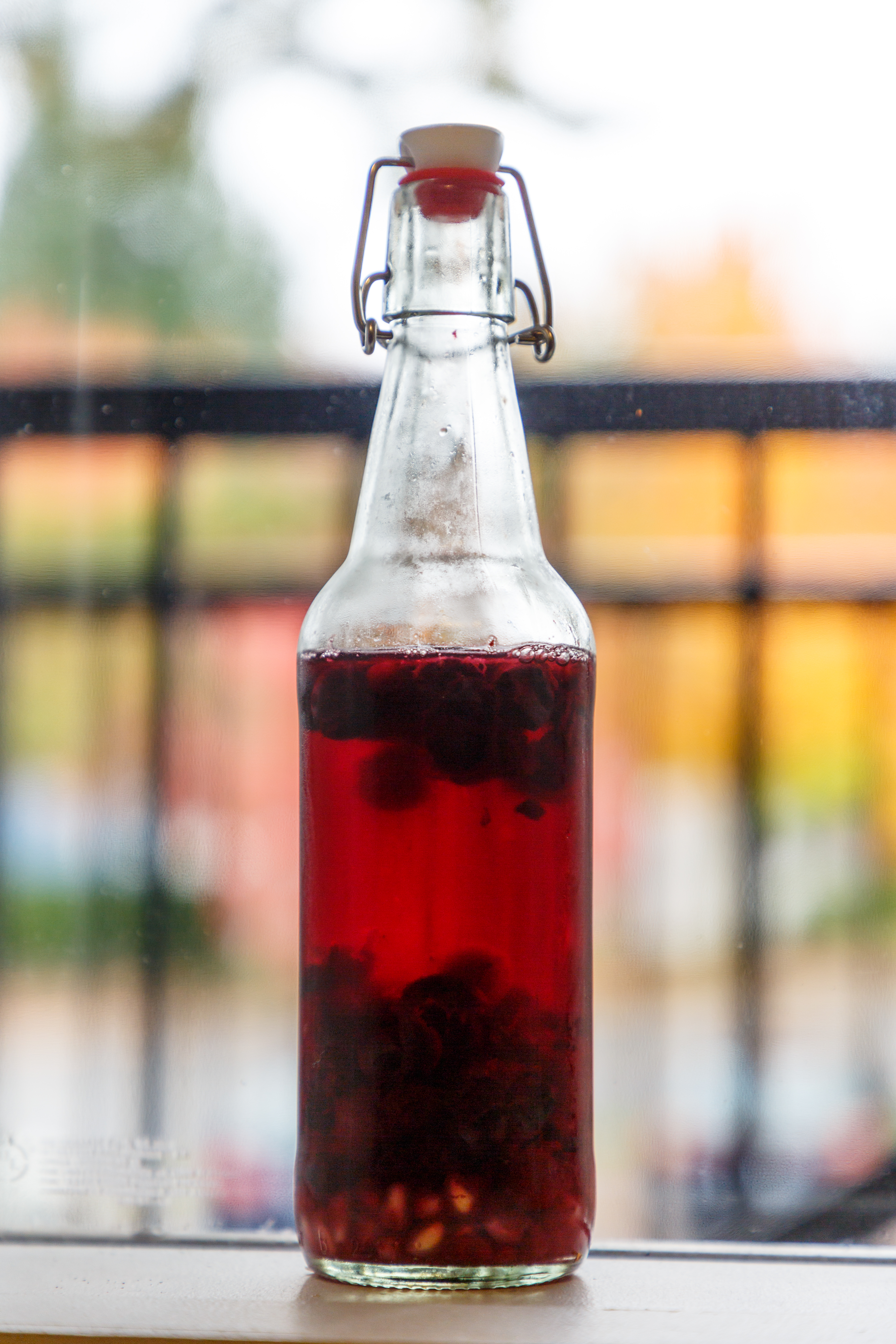A bottle of self-brewed pomegranate and grape flavored kombucha. PJ Heusted // AS Review
By PJ Heusted
“Who carbonizes a V8 drink?” Michelle Soi, a Western first-year said when trying to explain kombucha.
Soi is one of the many students at Western who have tried kombucha given the recent cultural buzz around the fermented drink. With an almost overwhelming number of brands, flavors and promises of various health benefits it can be daunting to begin to explore the world of kombucha.
“I just drink it every now and then because I’ve heard about it before and how it’s supposed to be good for you,” Soi said. “I just heard it’s supposed to, like, cleanse out your body. Like those juice cleanses.”
While some claim that kombucha does have intense healing properties and health benefits, there is not much scientific evidence to support many of the claims. However, kombucha is made through the process of fermentation and the symbiotic culture of bacteria and yeast (SCOBY) that fuels the fermentation does provide probiotic benefits.
Although some swear by drinking kombucha on the daily, with a price upwards of $3.00 for one can or bottle it can be difficult to justify indulging in the drink. In order to avoid bleeding your bank account dry to drink it daily, the option to brew your own kombucha is a logical next step.
Matt Coon and his roommates in Ridgeway Kappa last year took to brewing their own kombucha in their dorm.
Coon said that he was inspired after watching the kombucha episode of “It’s Alive with Brad Leone” on the Bon Appetit YouTube channel.
“We [Coon and his roommate] were in Kappa last year and we were like ‘How can we make friends?’ Like, we need to make an identity for ourselves,” Coon said. “We decided that we were going to try brewing kombucha together.”
Fermentation can be a finicky process given that you are working with live cultures and the environment that you are brewing in directly impacts the process and final product.
“It kind of sucked the first couple times, but eventually we got the hang of it,” Coon said.
Brewing kombucha at home allows for a lot more freedom over the process than just buying a bottle at the grocery store. When you are the one brewing you are able to control the length of the fermentation, the type of tea used and the ingredients used to flavor the final product. In the store, you are at the mercy of the companies selling the kombucha.
“I like to pick the flavors for my ferments based off of what is in season. I take a lot of inspiration from what other people post online and going to the farmers market or co-op and seeing what is in season there,” Chloe Nordyke, a second-year student at Western, said.
It may seem daunting to start your own fermentation project, but the process itself is mostly just sitting and waiting for the yeast to do the work for you.
Brewing your own kombucha requires you to make a bulk batch of sweet tea that is used to feed the starter, or SCOBY. This mixture then sits in the vessel, typically a large glass jar, for roughly a week before it is bottled and flavored. This flavoring and carbonating process, called the second fermentation, lasts about two days before the bottles are refrigerated and ready to be consumed.

Recipe for One Gallon of Kombucha:
You will need:
- Two tablespoons of loose leaf black tea or eight tea bags
- One cup of sugar
- 14 cups of filtered water
- Two cups of starter tea and a SCOBY
Instructions:
- Bring four cups of water to a boil
- Add sugar and stir until fully dissolved
- Steep the tea for up to 20 minutes
- Remove tea concentrate mixture from heat and add the remaining 10 cups of water
- Allow entire mixture to cool until it is below 90 degrees Fahrenheit
- Once cooled, pour sweet tea into large jar or other vessel. Be sure to avoid plastic or metal
- Pour in starter tea and SCOBY
- Cover with tightly-woven cloth and secure with a rubber band
- Wait five to seven days or until desired taste is achieved
- Bottle kombucha with any other desired ingredients for flavor
There are a variety of resources available online or in print about kombucha brewing methods if you are interested in brewing your own.

